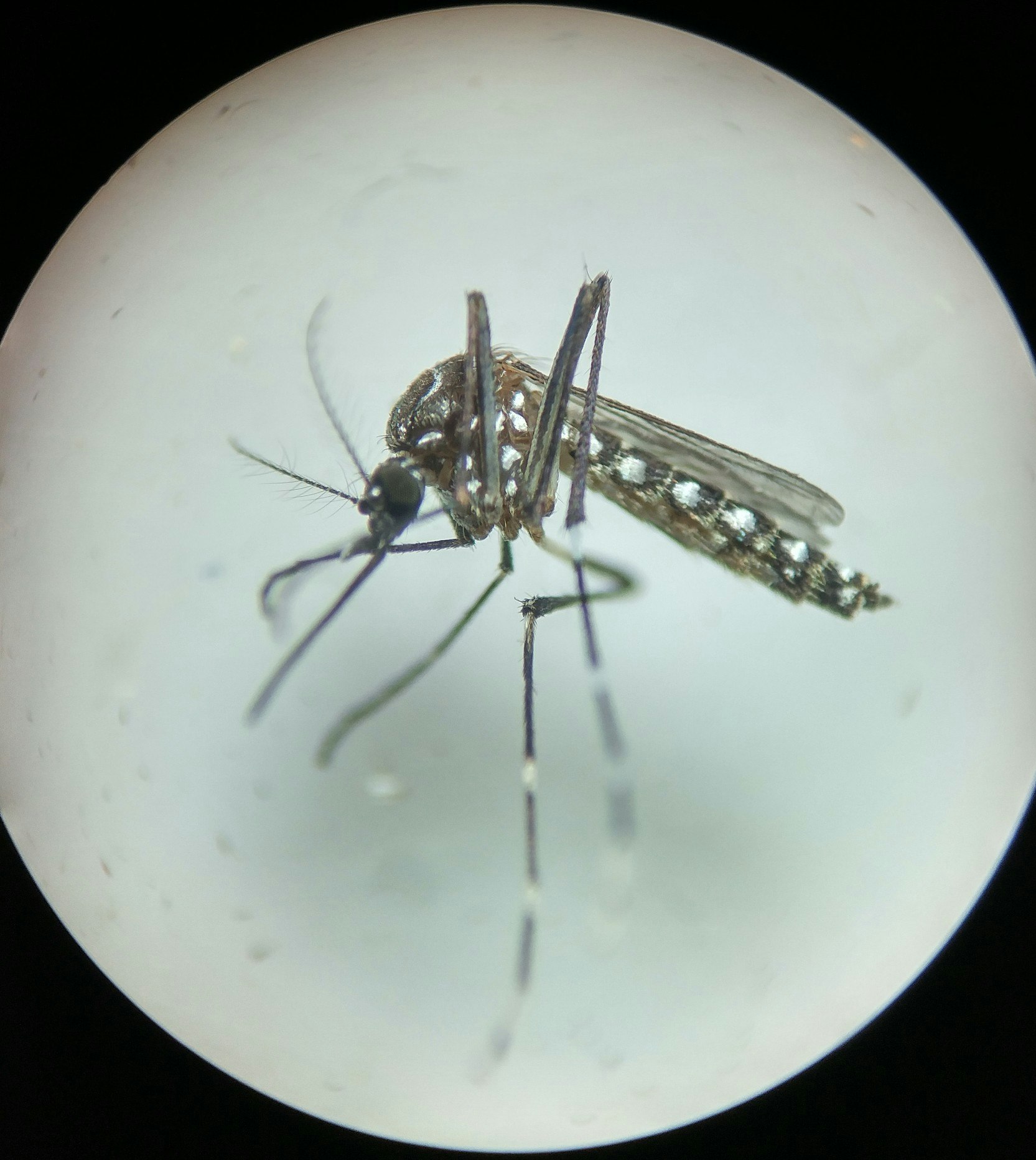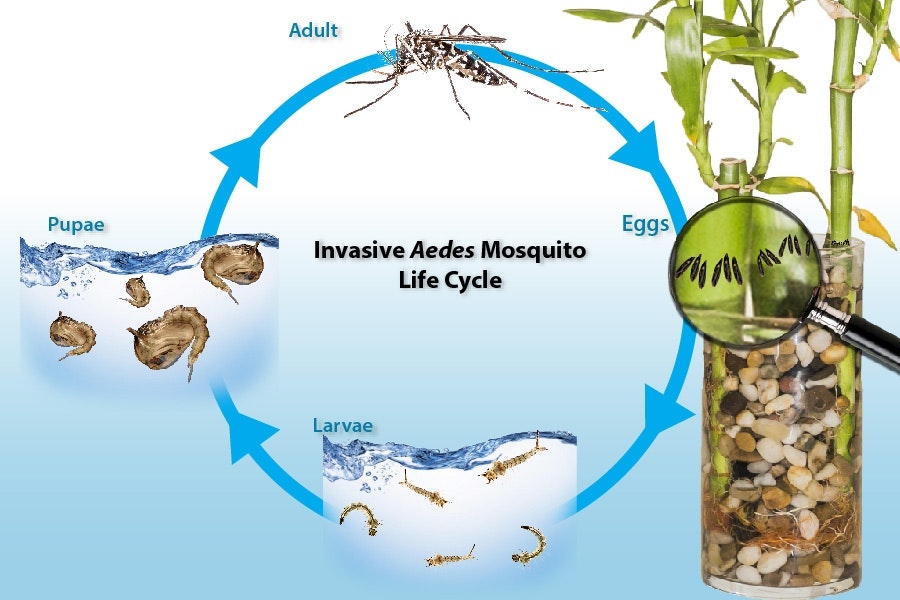Invasive Aedes Mosquitoes

Do you happen to have any of these mosquito sources around your house or yard?
Defunct fountains, plant saucers, kids toys, bird baths, yard clutter, bromeliad plants, aquatic plants (such as Lucky Bamboo), trash, recycling and old tires are common sources of Aedes mosquitoes!
.png?ixlib=rb-1.1.0&w=2000&h=2000&fit=max&or=0&s=811fc3b85bdb32aff3db55e3211ef734)
Aedes (pronounced "aid-dees") mosquitoes are aggressive, black-and-white insects that thrive in our cities. They've been nicknamed "ankle biters" due to their tendency to bite people on the lower portion of the body. These are not your common Southern House mosquitoes - or Culex - which we are accustomed to and are light brown in color.

Aedes love humans, but not just for our blood 🩸. Our communities and homes inadvertently provide the perfect sheltered hangout spots and breeding sources for Aedes mosquitoes that seek out containers to lay their eggs in. After taking our blood, female mosquitoes search for stagnant water in many types of containers 💦 to lay their eggs!
What's The Big Deal About Aedes Mosquitoes Anyway?!
They are efficient at transmitting (spreading) several fatal human arboviruses including chikungunya, dengue, Yellow Fever and Zika virus. In recent U.S. history, Aedes mosquitoes were responsible for Zika outbreaks in Florida, Texas, Hawaii, and Puerto Rico. Although there have been no instances of local transmission of any of these tropical diseases yet, the potential for these diseases to make their way into the population is very real. If you travel (Europe, Asia and South America), please be aware you could be a carrier of these diseases and not know it! If a local Aedes mosquito bites a local person who is infected with one of these tropical diseases due to their travels, the disease could potentially enter the local mosquito population. In October of 2023, for the first time in California history, Dengue fever was found to be circulating in the Aedes mosquito populations and caused transmission in people in both Pasadena and Long Beach. In 2024, additional local transmission of Dengue fever was detected in Baldwin Park and Panorama City.
View the full article on 2023 CA Dengue fever transmission HERE
✈ BE SURE TO CHECK OUT THE CDC TRAVEL ADVISORIES PRIOR TO TRAVEL ✈
How Do I Know If Aedes Are Living Around My Home? 🏡
- You or a family member receive mosquito bites during the daytime hours - and not just morning or evening when our Native Culex mosquitoes typically bite.
- Mosquitoes are biting indoors (office, home, garage, etc.)
- You notice black-and-white adult mosquitoes about the size of a pencil eraser head.
How Do I Keep Them Out of My Home? 🏡
Tip n' Toss 💦
Aedes are known as 'container breeders' because they tend to breed in small, unsuspecting containers. Tip out any stagnant water, and toss out unused containers. All mosquitoes require stagnant water to lay their eggs and grow. Eliminating stagnant water around your home prevents mosquitoes from developing in the first place. This is called “source reduction.” If done weekly, source reduction is much more effective at eliminating mosquitoes than using any pesticides!
Talk to your neighbors 🤝🏽
In order to reduce the population and control the nuisance, residents must take responsibility for their own yards and work with their neighbors to do the same. Make mosquito source reduction a part of your weekly routine. Together we can keep a healthier Antelope Valley.

How did invasive Aedes mosquitoes get here?🤷🏽♂️
In 2018 our staff identified a thriving population of Aedes aegypti (one type of Aedes mosquito) in the city of Lancaster. The mosquito eggs were inside a bucket of landscaping rocks that was relocated from an Aedes infested area from Northern Los Angeles County. The bucket got inadvertently filled with sprinkler water and the eggs were able to hatch. From there, the mosquitoes were able to use stagnant water in flower pots, planters, aquatic plants (even indoors) and over-watered vegetation surrounding people’s homes to continue laying eggs. In subsequent years, Aedes aegypti have been located in several other areas of Lancaster and Palmdale and in 2021, Aedes mosquito detections increased more than tenfold from 2020. The summer storm Hilary in 2023 provided the perfect conditions to allow the Aedes mosquito population to boom. The Antelope Valley is feeling the impact of these pesky mosquitoes on the community.

.png?ixlib=rb-1.1.0&w=2000&h=2000&fit=max&or=0&s=5bd308a584a50c7807d13dc421e8898e)
Aedes Mosquito Detections the the Antelope Valley 2018-2023:
.png?ixlib=rb-1.1.0&w=2000&h=2000&fit=max&or=0&s=55bbd8346d5f20395de2d24e8a963148)
